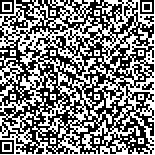| 引用本文: | 倪志盛,王明彦.基于动态模糊神经网络的多余力矩抑制方法[J].哈尔滨工业大学学报,2012,44(10):79.DOI:10.11918/j.issn.0367-6234.2012.10.017 |
| NI Zhi-sheng,WANG Ming-yan.A novel method for restraining the redundancy torque based on DFNN[J].Journal of Harbin Institute of Technology,2012,44(10):79.DOI:10.11918/j.issn.0367-6234.2012.10.017 |
|
| 摘要: |
| 针对负载模拟器难以准确建模,多余力矩严重影响力矩加载性能的特点,提出一种基于动态模糊神经网络抑制多余力矩的新方法.该动态模糊神经网络无须较强领域的专家知识,是系统自动建模及抽取模糊规则的网络,且模糊神经网络结构是动态变化的,其模糊规则是在学习过程中逐渐增长而形成的.设计了结合前馈反馈控制和直接逆控制的控制策略,在线更新算法,实时更新网络结构及参数以及时跟踪被控对象逆模型的变化,与其并行的PID控制器的作用在于保持系统的稳定并获得更快速的系统响应和更佳的跟踪精度.通过仿真可以看出基本消除了多余力矩,系统性能得到改善,仿真效果令人满意. |
| 关键词: 电动负载模拟器 多余力矩 动态模糊神经网络 前馈反馈控制 |
| DOI:10.11918/j.issn.0367-6234.2012.10.017 |
| 分类号:TP183 |
| 基金项目:国家自然科学基金资助项目(51077025); 黑龙江省自然科学基金资助项目(E200828). |
|
| A novel method for restraining the redundancy torque based on DFNN |
|
NI Zhi-sheng, WANG Ming-yan
|
|
School of Electrical Engineering and Automation, Harbin Institute of Technology, 150001 Harbin, China
|
| Abstract: |
| According to load simulator, it is difficult to be accurately modeled. Redundancy torque affects the performance characteristics of load torque seriously. A new method of eliminating redundancy torque is proposed based on a dynamic fuzzy neural network(DFNN). The dynamic fuzzy neural network is the system to be automatic modeling and extracting fuzzy rules of the network, without strong of experts in the field of knowledge. The fuzzy neural network structure changes dynamically. The fuzzy rules form with the learning process. The control strategy is combining with the feed-forward feedback control and direct inverse control, updating algorithm, the network structure and parameters online, tracking of the controlled object inverse model changes. Its parallel the PID controller is to keep the function of the system stability and get a more rapid response and better tracking precision. The satisfactory result of the simulation shows that redundancy torque eliminates effectively, the performance of load simulator system is improved. |
| Key words: load simulator redundancy torque DFNN feed-forward feedback control |







